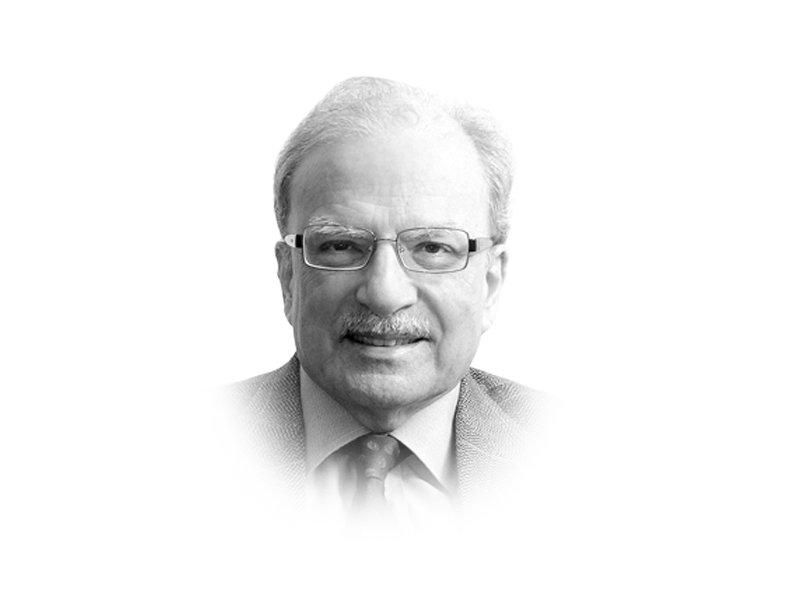
Pakistanis will go to the polls on July 25, 2018 to elect a new National Assembly as well as the assemblies of the country’s four constituent provinces. In the view of this author, this will be by far the most important election since 1970. That election set the stage for the break-up of Pakistan and the emergence of what was then East Pakistan as the independent state of Bangladesh. The 2018 elections are being held at a time that may also turn out to be a defining moment in Pakistan’s more than 70 years of history.
The election’s importance will be the consequence of a number of developments some of which have not been fully recognised by analysts. Previous elections were held while Pakistan’s political system was still not fully formed. In 2018, the political structure stand atop five pillars, some built a long while back while others were of recent vintage. The higher judiciary was the most recent addition to this structure and it made its presence felt by removing Mian Nawaz Sharif from the electoral contest and sending him to prison on charges of money-laundering and corruption.
There are five important political groupings that will participate in the electoral contest. Like the five political pillars they are also of different ages: the one headed by Nawaz Sharif — the Pakistan Muslim League (Nawaz) — could trace its history back to 1906. Its most important challenger was the most recent addition to the political stage — the Pakistan Tehreek-e-Insaf, headed by Imran Khan, a cricketer-turned-politician. The PTI’s focus is on what it sees as rampant corruption in the country and poor governance. In between these two is the Pakistan Peoples Party founded in 1967 by Zulfikar Ali Bhutto who had parted company with president Ayub Khan, his political mentor.
The 2018 elections also saw the reemergence of the Muttahida Majlis-e-Amal, a coalition of religious parties that wants to bring Islamic form of governance to Pakistan. There is a great deal of confusion in this portion of the political spectrum, partly the consequence of the action taken by the state to bring extremism under control. New parties have been created in order to ride over the decisions by the authorities not to allow some of the candidates representing the banned organisations to participate in the elections.
Finally in the mainstream is the Muttahida Qaumi Movement, better known by its acronym, MQM. Its founder seems to be losing control over the organisation he had founded as a student activist to represent the interests of the Muhajir community, the descendants of the 3 million or so Urdu-speaking Muslims who left India for Pakistan at the time of the departure of the British from India. Even Altaf Hussain’s charisma does not serve him well to keep his followers united as he spends time in London in exile.
There are also demographic developments of which analysts should take cognisance as they view the situation before the country goes to the polls. The Census of 2017 brought to light a number of factors that surprised not only the government but also the community of economists. The size of the population turned out to be much larger than assumed. The population’s rate of growth is also much higher. This means the population is very young with the median age of only 24 years. There are now more than 100 million people below that age. The median age in large cities because of the large-scale movement of people from the countryside and small towns is much lower than that of the country. Probably 75 per cent of the population of the cities such as Karachi, Lahore, Rawalpindi-Islamabad and Faisalabad is below the age of 24. These people have aspirations that may result in a large turnout of the 20 million new voters who have joined the electorate. Which way these voters will go is an open question as the country heads for the polls.
At this time in the country’s political life the 2018 elections should help to answer a number of questions concerning the future. What would happen to the five-way division in the political spectrum? Would the elections solidify the divisions or bring about some mergers? Would the elections result in the reconfiguration of the country’s administrative structure by creating new provinces by reducing the size of Punjab?
2018 was also the year when a number of developments outside the country’s borders were of serious consequences for Pakistan. These included the hostile attitude adopted towards the country by Donald Trump, the United States President. Islamabad was accused of not helping Washington with its doomed efforts in Afghanistan. Washington’s hostility came at a time when the government of President Xi Jinping in China had recognised Pakistan as the lynchpin in the trillion dollar enterprise it called the Road and Belt Initiative. The country’s external environment has been changing rapidly as a result of the breakdown in the political and economic order that brought global prosperity and world peace over a period of 70 years.
(Concluded)
Published in The Express Tribune, July 24th, 2018.
Like Opinion & Editorial on Facebook, follow @ETOpEd on Twitter to receive all updates on all our daily pieces.












COMMENTS
Comments are moderated and generally will be posted if they are on-topic and not abusive.
For more information, please see our Comments FAQ